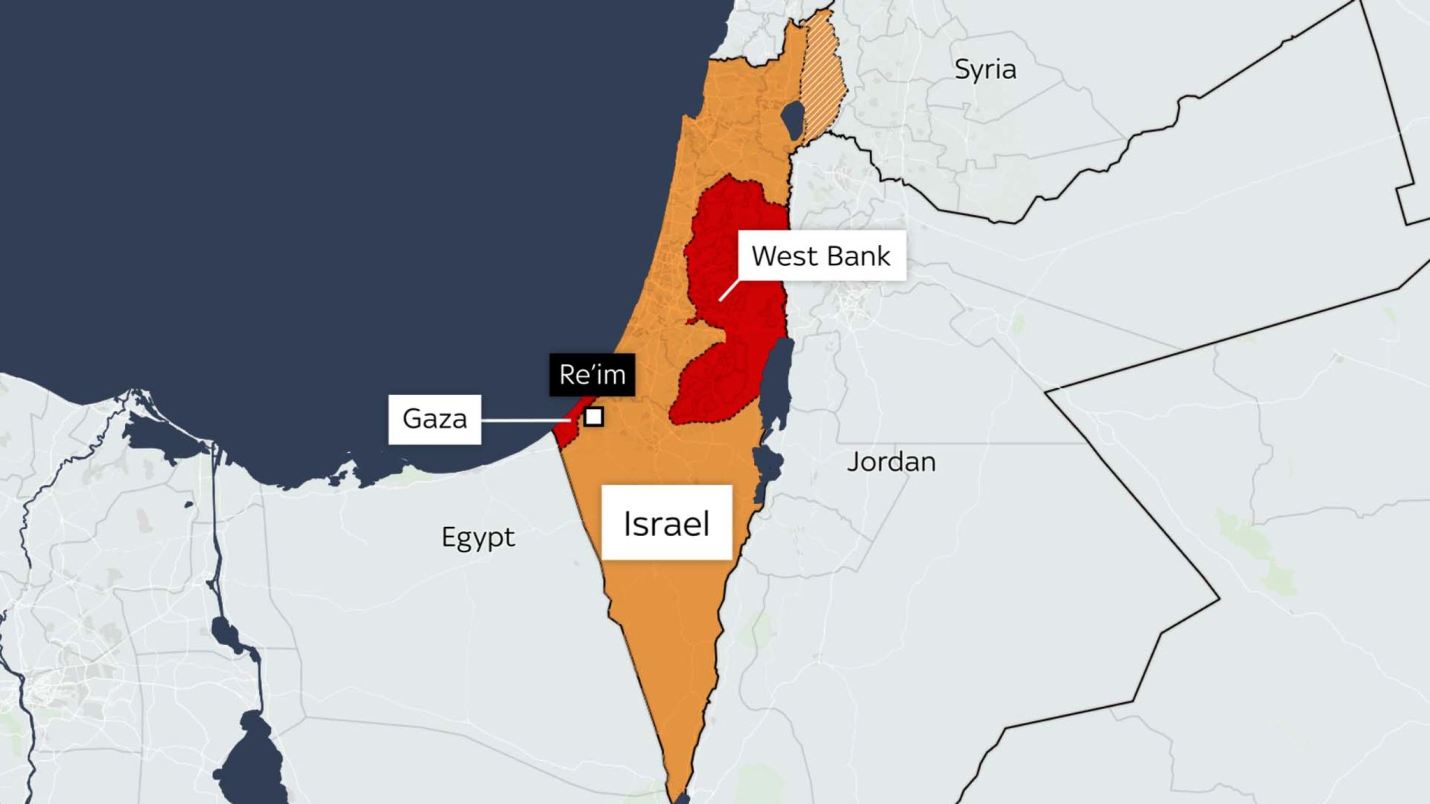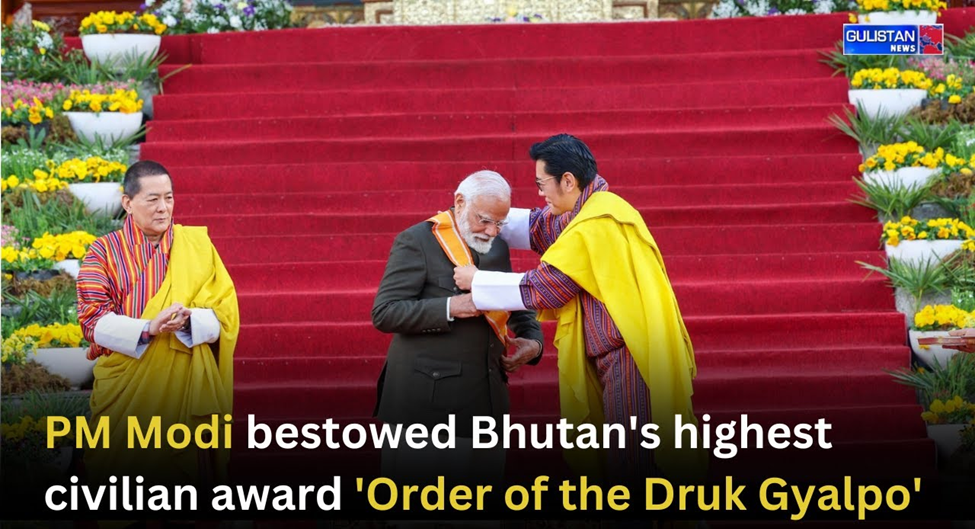Description
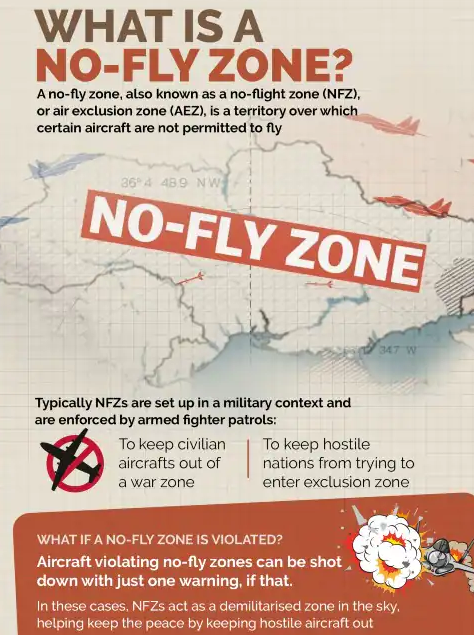
Copyright infringement is not intended
Context: Ukrainian President has appealed to NATO to impose a no-fly zone over the country. However, NATO leaders have ruled out the possibility of establishing and policing a no-fly zone over Ukraine as it could lead to a needless escalation of the situation.
What Is A No-Fly Zone?
- Purpose: No-fly zones are frequently used to shield civilians from airstrikes and to prevent an adversary from achieving air dominance, or control of the skies above a battlefield.
- Restriction: When a no-fly zone is imposed, certain aircraft are prohibited from flying in that zone.
- Enforcement: To successfully implement it, no-fly zones need a credible threat of military action if a target country violates prohibited airspace and sends aircraft into the zone. Enforcement can take a variety of forms, including shooting down planes that have violated the zone.
- UN and No-Fly zone:
- Articles under Chapter VII of the United Nations Charter dealing with ‘Action with Respect to Threats to the Peace, Breaches of the Peace, and Acts of Aggression’ are invoked to authorise a potential no-fly zone.
- Article 39 dictates the United Nations Security Council (UNSC) to determine the probable existence of any threat to peace or an act of aggression.
- No fly zones have been implemented without UN mandate too. In 1991 after the first Gulf War, U.S. and its coalition partners imposed two no fly zones over Iraq to prevent Saddam Hussain from attacking ethnic groups.
- In non-combat situations, No fly zones can be imposed permanently and temporarily over sensitive installations or for high profile events like Olympics.
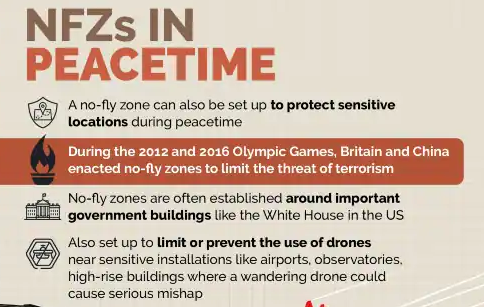
Why NATO is reluctant in imposing No-Fly Zone?
- A ‘No fly zone’ over Ukrainian airspace would essentially mean NATO deploying aircraft and assets which would result in a direct confrontation with nuclear armed Russia.
- It would involve NATO shooting down Russian fighters jets or aircrafts that could esclalate into a full-scale war in Europe.
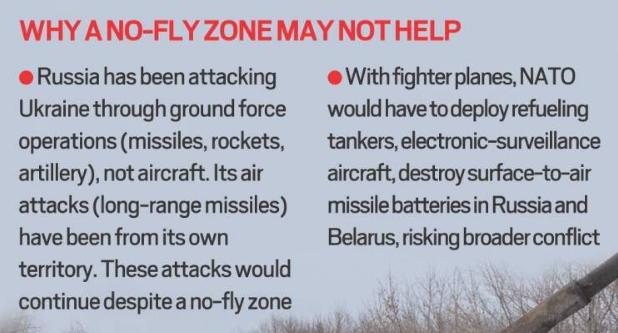
When India Blocked Its Air Space for Pakistan
- India gained its largest and most conclusive military victory in 1971 that resulted in Pakistan’s split and the birth of a new country, Bangladesh.
- Air superiority established by India played an important role in this triumph.
- Pakistan Army formally commenced its genocidal campaign, dubbed ‘Operation Searchlight,’ dispatching death squads that allegedly slaughtered 7,000 unarmed, innocent Bengalis in a single night.
- India had banned overflights of Pakistani aircraft through its airspace. This actually made things challenging for West Pakistani reinforcements, which had to take the much longer route via Sri Lanka.
- By December 6, 1971, the IAF had achieved air superiority in the Eastern Sector and was able to completely satisfy and even surpass the army’s ground operations needs whenever the situation required it.
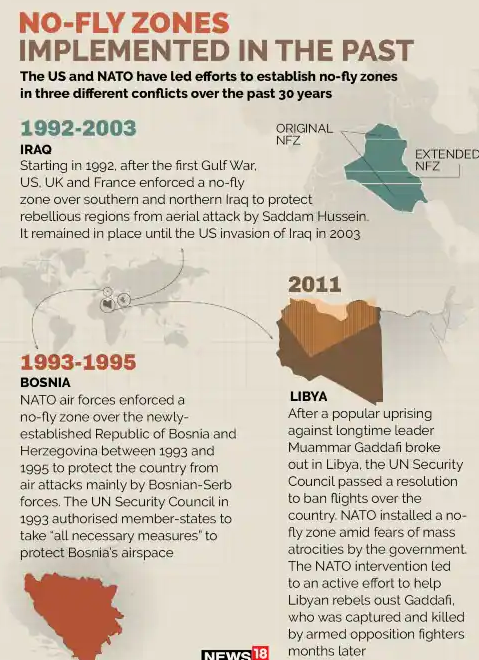
https://indianexpress.com/article/explained/quixplained-ukraine-no-fly-zone-nato-7828017/















